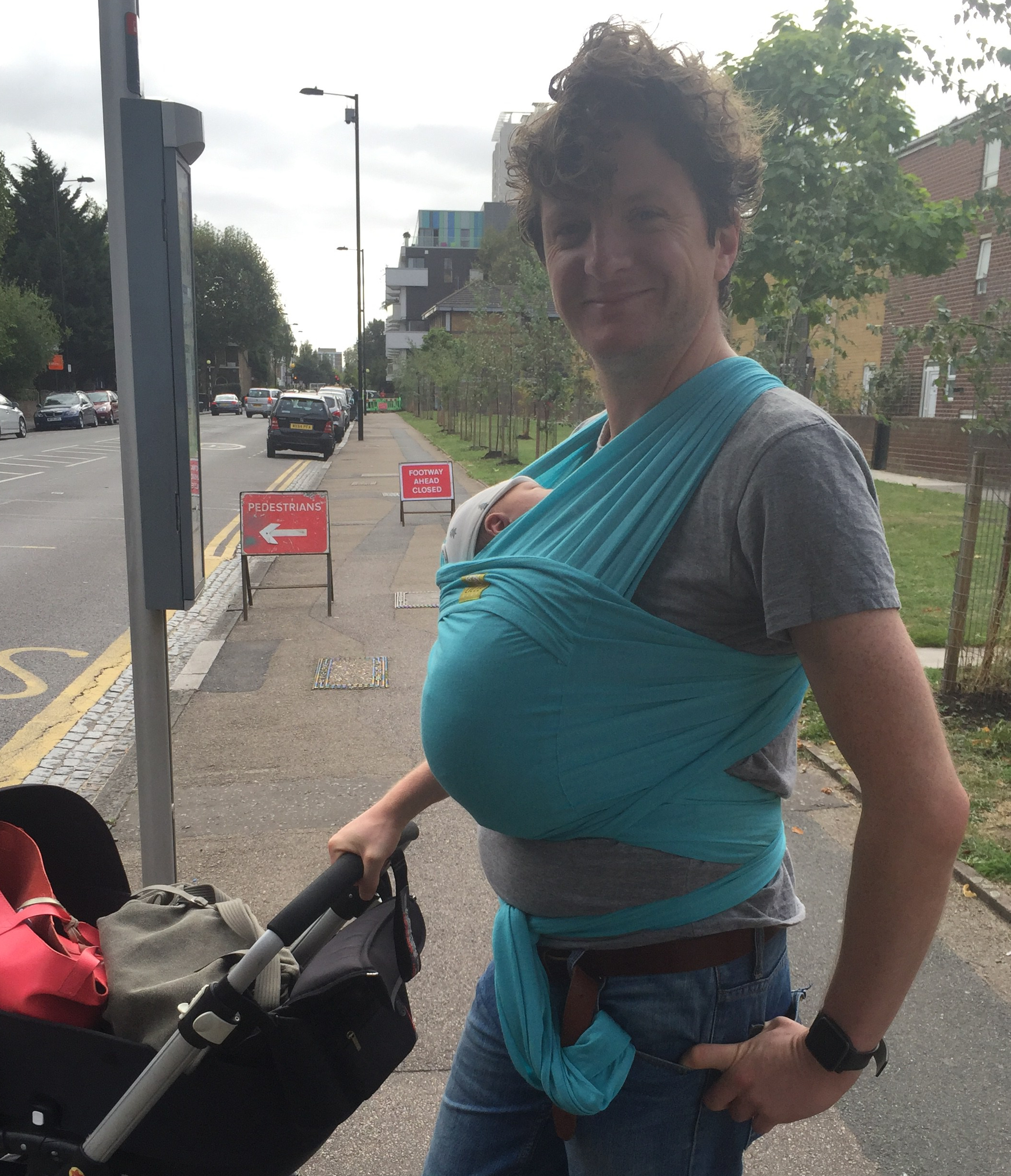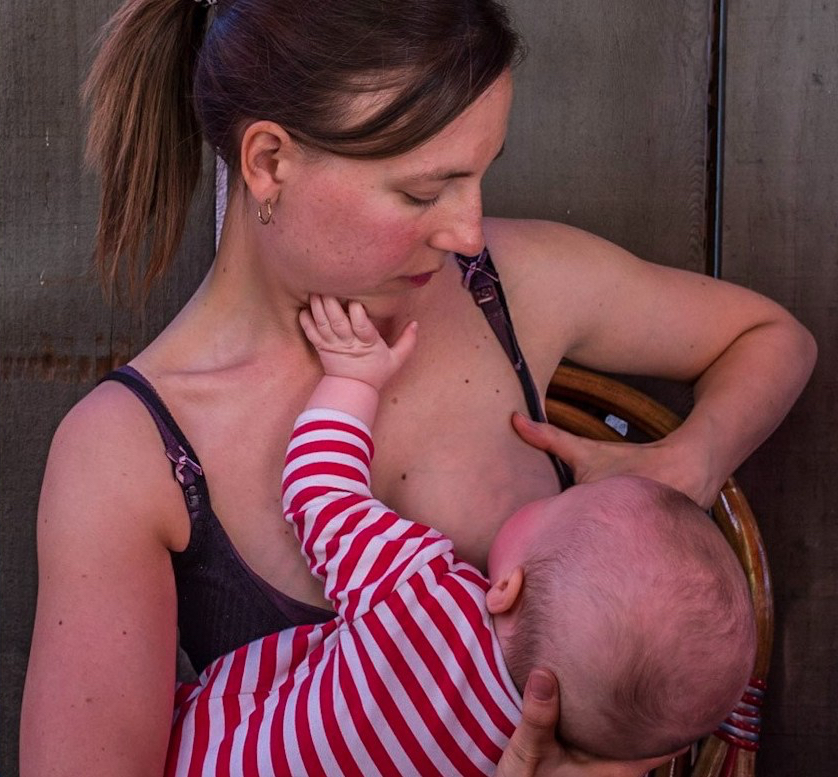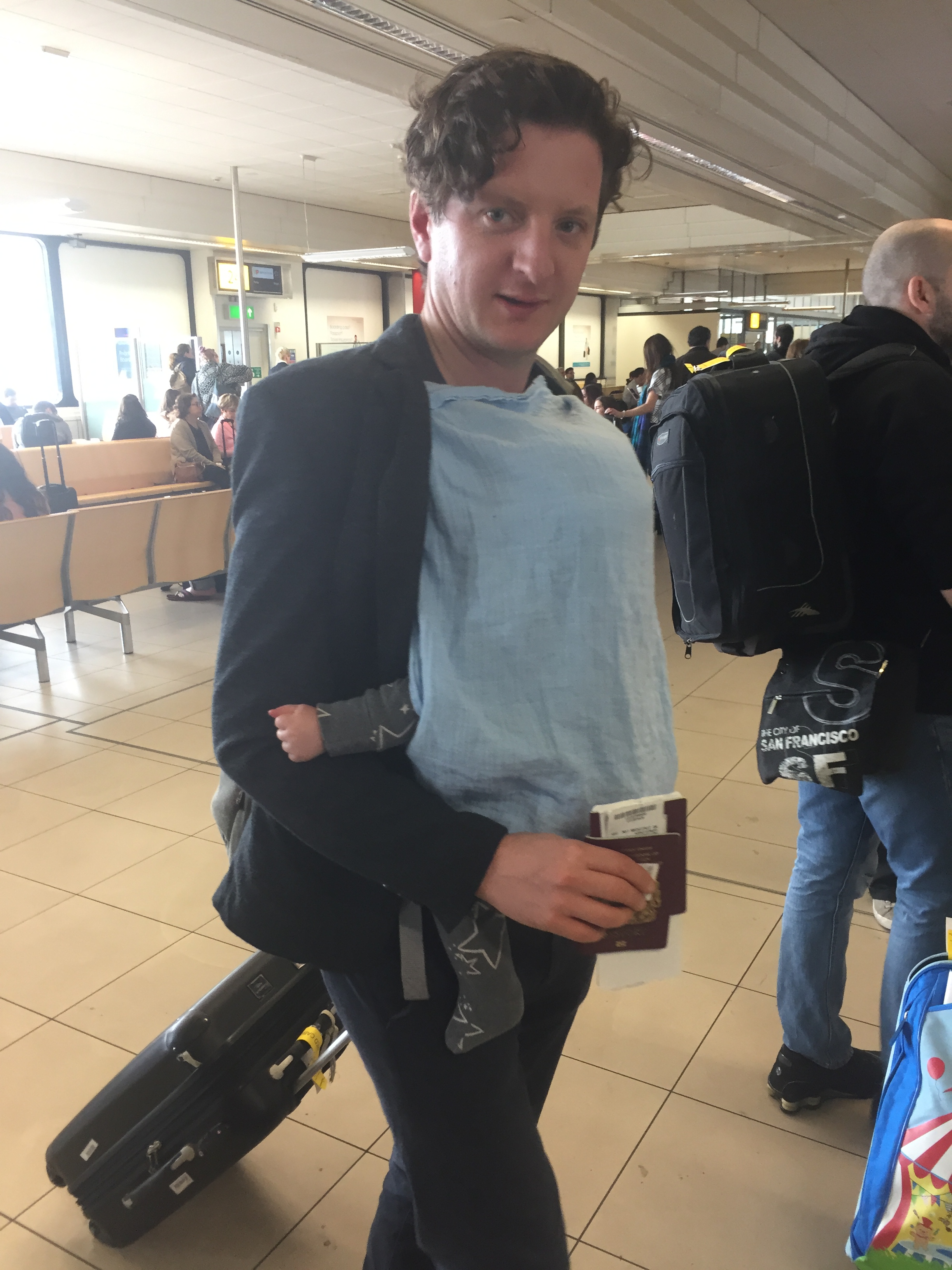
Your newborn baby is probably not leaving you much free time to get things done, but it pays to get organised in advance, if you can. Being prepared ahead of time, rather than rushing to sort everything out just as you’re walking out the door, is key to reducing the stress of those first outings. (This advice holds good for older babies and toddlers too: having the baby girl’s bag and pushchair packed and ready to go makes getting out and about much easier; alas, I’m rarely as organised as I’d like to be. This is very much a case of do as I say, not as I do.)
If you’re taking your baby out in her pushchair, you’ll want a bag that will hang off the handles. Specialised changing bags are useful but by no means essential for this purpose – a lot of ordinary shoulder bags or shoppers will work just fine with a pair of pushchair clips (we use these ones from My Buggy Buddy). For journeys with a sling (often easier than a pushchair, and more comforting for very little babies – more about why slings are excellent in my ‘essential kit’ post on the subject), a backpack is almost certainly your most comfortable option.
Either way (and it’s not a bad idea to prepare two bags so you’re ready to go with both sling and pushchair), here’s what you need:
- nappy changing mat and wallet with a few nappies and wipes (plus nappy rash cream and nappy sacks if you use them)
- a muslin square or two, depending on how pukey your baby is
- spare outfit – vest, sleepsuit, jumper
- hat
- blanket
- spare T-shirt/jumper for yourself in case the baby vomits on you in an impressive way
If you’re breastfeeding you’ll also need:
- spare nursing pads
- bottle of water and some snacks for yourself
If bottle-feeding:
- sterilised bottle and teat
- bottle of ready-made formula OR powder formula in small sterilised containers, plus a vacuum flask of just boiled water
- bib
Optional extras:
- if you’re recovering from an episiotomy, an inflatable ring cushion to sit on
- if you’ve got long hair, a couple of hair ties
- if your baby suffers from wind, Infacol
- dummies

For trips with the pushchair make sure you’ve got the sling with you just in case your baby has a meltdown and you end up needing to carry her in your arms. It should fit in the basket under the pushchair with no difficulties, leaving plenty of space for a rain cover and a sleep shade (another piece of essential kit). Have your baby’s bag packed and hanging off the pushchair ready to go, along with a buggy organiser to hold essentials such as a phone, wallet, sunglasses, etc.
Have your baby’s warm outer layer, your own coat, and a pair of comfortable, slip-on shoes (I wore the same pair of ankle boots every time I left the house for the first three months of the baby girl’s life) ready by the door, and don’t worry at all about what else you’re wearing or if you’ve showered that day. You will almost certainly have puke on you, but that’s fine: no one will care – they will be too busy being impressed that you have made it out the door with such a tiny human in tow.
The best moment to attempt an outing is immediately after a feed, so you’ve got maximum time before you need to find somewhere to sit and get your boobs/a bottle out again. Check that everything is ready to go (including making up a bottle of formula if you know you’ll be feeding your baby very soon – otherwise, it’s safer to stick with making up a new bottle when you need it), change your baby’s nappy, cross your fingers that she doesn’t poo again as you’re walking out the door and leave the house as fast as you can. Good luck.


